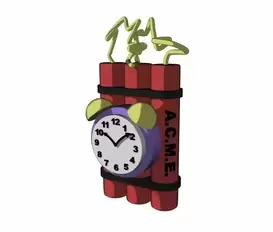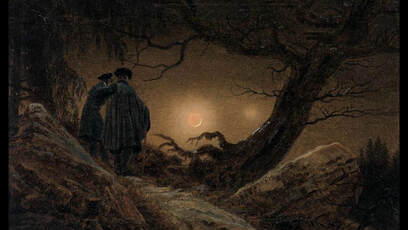|
Disaster!!! For the first time since May 3rd, I missed my 4 a.m. wake-up.
But this is actually good news!! Why? Because I felt really bad about it. It made me mad. The reason I overslept is because I had a good time on Sunday and wound up staying up a bit later than I should have. So, I paid the price... It's infuriating to be put off my game like this! Sometimes our emotions send us messages we don't really "get." For example. when we're mad we just feel... mad. In this case, my anger is a positive sign that I'm committed to my regiment, that it's not just a pose or a momentary flight of fancy. So what do I do about botching my Monday wake-up? I carry on as usual, try to make up for the lost hours by working even harder today and get up at 4 a.m. tomorrow! Tally Poems Written: 293 Submission Tally: 47 Rejections: 17 (10 tiered) Acceptances: 0 Poem written today: "Sleeping Late" Music track (unmixed demo) completed "Global Rain."
0 Comments
Two poems drafted this morning: "Honeysuckle" and "Small Self-Portrait." The first poem came after taking a bike ride yesterday and seeing honeysuckle everywhere. Also, I had a brief but troubling encounter with a "fugitive" man who struck up a conversation with me in the park. The second poem, "Small Self-Portrait," is about 8 lines long and I wrote it mainly to fill up the rest of the page in my notebook. Some Stats Writing: 291 poems written since 3-19-20. Probably about 35-40 typed and submitted. Submitting: 45 submissions. 16 rejections. 0 acceptances. 9 tiered rejections. 7 standard. Geeze, Daniel, no acceptances? I thought you were good at this! Well, I'm only submitting to the toughest markets right now by design, so you know how that goes... Since May 3rd, I've been getting up at 4 a.m. each day to work on poems and I'm determined to write a poem each day, type up a draft each day, and make a submission each day. I'm interested to see what comes of this push, foremost in terms of whether or not it seems to make my poems better. I've been feeling inspired lately and I want to make the most of the creative energy while its available! I'm also working on some music tracks and prose pieces that I hope to release and/or publish soon. Meanwhile, I'll probably post more blog entries like this one, just keeping a tally of my trek. Once my energy is expended, I'll almost certainly go back to tips and reviews... I'm seeing good work out there on social media and in the literary journals and 'zines. Keep it up! It's deeply inspiring. Meanwhile if you want another set of eyes and ears for your work, hit me up through one of the buttons below. The editing and critiquing services have been working out extremely well. I've had absolutely zero complaints or dissatisfied customers and have dealt with scores of individual poems. So far, I've heard nothing but enthusiastic praise and many poets have become repeat customers. If you want some help, just click one of the buttons below! Categories All The title's a bit misleading, since what I actually want to talk about is not so much a conflict between prose and poetry as the differences in imagination that are involved. What started me thinking about this was a recent poem I wrote called "Walking to Church" which involved some deep and quite personal memories. As I was writing the first draft of the poem, I realized I might be able to write effectively about the same memory in prose. I didn't think it would be better in prose, but I wondered what kind of images the imagination might choose for a prose piece, and how the same memories might be expressed in totally different ways, almost as if by different people. Plath's "Ocean 1212w" is a spectacular example of a poet doing a better job in prose some of the trademark poetic imagery. In this case, Plath's childhood memories of the Massachusetts coast, so vital to her poetry, find a fuller expression of lost innocence than even the best of her poems. Personally, I've never tried to consciously engage with the same theme in both prose and poetry, but I think I'm going to try it. Maybe you should too and if you find out anything interesting et me know. Also, if you've already experimented with doing this, please let me know. Nothing makes me happier than growing and learning as an artist. Which brings me to my last bit for this post: why this blog is so seldom updated. Well, the good news is it's because I'm writing! I've been on fire creatively and eager to cover as much ground as possible. As such it's been tough to keep up with poetry tips and reviews of other poets, though I'm still reading a lot every day online and elsewhere. I'm aware of the work you're all doing and posting and it's inspiring. So, the blog may take a bit of a turn and I'll yack about my writing and submitting experiences until the creative fires inevitably dip back down and I'll go back to more reviews and tips. I'm still open for polishing, critiquing, and editing -- just click a button below or email me at writerdan@mail.com or pitchblackpoet@yahoo.com Categories All @BlackstonDan "Salt Pieces" by Taghrid Abdelal from New England Review 43.2 is a challenging poem that defies breezy explication. But I'm going to breeze through it anyway, and leave you to do the heavy lifting. Read the full poem by clicking the picture above. See what I mean? Don't take the easy road and tell me, "The poem's a translation." Take the hard road, with me, and try to grapple with the poem line by line. Image by image. The first three lines, to my ear, are virtually flawless: Everything will melt at the bottom of childhood: the road is the salt. That is they sound flawless. Does this mean they have flawless meaning? Does this mean they should have flawless meaning? And what's flawless meaning anyway? For that matter, what's flawless? Forget all that. Let's just stick to the poem. The next stanza promises us that salt: will devise new noses to seek us out. Then the poem gets sort of strange. There are jugs, unspecified observers, unspecified losses, the hint of an age defying anthem that promptly fragments, until we reach the poem's first vertical pronoun: I observe myself: I adhere to falling things because they are fractures of butterflies in a race God arranged. Incredible lines. Beauty dripping throughout and a sense of inventive longing. This is as subjective as poetry gets, but it's still speeding tantalizingly toward the universal. I can't tell you why, or how, precisely, but I feel it. The poem reaches it's conclusion in a flurry of questions. This rhetorical repetition is almost a reproach to the reader who certainly has no context through which to answer. This is where it stuns. Because the poem is a complete statement. It's the fractal of an unnamed emotion that, possibly, is unnamable. Yet we all experience it: the dream (or nightmare) quality that mixes with normal life until you can't really see it, and just when you do, it's gone again, but always there. I mentioned the idea of pataphysics in my last blog post. This poem is a tour-de-force of pataphysical epiphany. I'd love to hear what you make of its associations. Clearly, in this case, I need a little help from my friends. Drop me a line through the link below. Categories All Think of your poems as time bombs. Each line brings the reader a tick closer to the explosion... Get the full tip by clicking the button below!!! Categories All Michael Cunliffe is an interesting poet with quite a lot of range and insight. You'll find him on Facebook most days, posting clean, imaginative poems. For the most part, Cunliffe plays to his strong suits by writing on traditional themes and delivering what can be best described as warmly expected (and received) lyrics. Every now and again, though, the poetry angels sprinkle a bit of transcendental confetti across Cunliffe's virtual pages, and the result is almost always a pleasant wisp of Zen. For example, Cunliffe's, "Other Hand Clapping," (read by clicking the pic) is a pleasantly astonishing concrete poem, based on the classic koan: "What is the sound of one hand clapping?" Here, Cunliffe decides to plunge past the paradox and deliberately identify one hand (the right) with the thunderous sound of ego and self-applause, while the left hand remains a singer of soulful silence. I actually think this is the "answer" to that old koan -- at least one answer anyway. The sound of one hand clapping is the boundless music of the soul. The silence of the eternal one. And I thank Cunliffe for sharing his gnosis. Imagining the two hands in dialogue, on the precipice of "shaking" or uniting, is a brilliant poetic image, so brilliant it should be painted, or sculpted, or... made concrete. This is why Cunliffe deserves a double-brilliancy prize here. Not only did he realize the theme deserved visual representation, he was able to pull it off with aplomb. That's poetic instinct. You can't buy it and few are born with it. So how do you get it? Oh, by writing and writing and reading poets like Cunliffe who are solidly following the footsteps of the Muse. Let's take a look at a couple of other fine points from the poem. The first is the plainness of the diction. Cunliffe realizes that the concrete form provides enough spectacle, so the language can and should be pared down. Second, the two hands, visualized on the page, are in dialogue, both linguistically and visually. It's a dialogue of the soul and the flesh, but the flesh ain't listening. Cunliffe's conclusion: Your hand Feels not mine isn't an admission of defeat. It's a declaration of spiritual epiphany. It's the answer to the koan. Last thing: this poem had to be concrete to work. That's the only, and I mean only, justification for making a concrete poem. It may feel brilliant and inventive to shape your words this way, but unless the poem has to be concrete, you'll just look silly most of the time. Please friend me on Facebook and follow me @Twitter to keep up with all I'm doing. Categories All Follow me on Twitter @BlackstonDan Today I'm going to share a simple trick to infuse your poems with life and personality. The tip's very easy to grasp, effortless to employ, and works as consistently as whiskey. But, like whiskey, a little can go a long way! In other words, there's potential danger in this tip, so consider yourself warned.... Get the full tip by clicking the button below!!! Categories All The title, primary image, narrative, and setting of Byron’s poem “Darkness” (click pic above to read) reflect a sustained nihilism. The poem defies the cultural and artistic conventions of its time and the past. It challenges everything. “Darkness” stands as a rebuke of the Victorian mores and ideals. That rejection is of all existing ideals and philosophies; virtually all aesthetic theories, and all known facts and assumptions. The only thing that's spared (and therefore exalted) in the poem is the power of the imagination. Byron pens the destruction of every meaningful Victorian value in the poem from human love and rationality, to faith in science or God. The idea of the abyss is very important in “Darkness” and functions as a way for Byron to imagine the destruction of all contemporary mores and strictures. With them go the limitations of imagination and expression that they hold over individuals, poets included. Byron’s imagined destruction is a purposeful imagining. His goal is to see what remains in the face of total apocalypse. Early in the poem, Byron strikes straight to the heart of what most of us consider the most basic elements of humanity. When the sun and stars disappear and the entire word is engulfed in darkness, connections between people are quickly forgotten in the struggle for survival: And men forgot their passions in the dread Of this their desolation; and all hearts Were chill'd into a selfish prayer for light: The word “prayer” is an inversion of the socially accepted idea of prayer. Instead of praying for goodness or peace or the well-being of others, the instinctual prayer that emerges during the apocalypse of darkness is based purely on selfishness. Byron alludes rather cryptically to the hypocrisy of religion, rather than simply declaring it in a straightforward way. He uses the idea of all-consuming darkness to ironically shed light on what the world had previously kept hidden. As the darkness becomes more absolute, more and more hypocrisies and fallacies are revealed. This is in keeping with the romantic tendency to at once delve deeply for truth but also somewhat hide the revelation of what is discovered. The central inversion of the poem, turning darkness into a kind of penetrating light, is Byron’s way of revealing through “resistance.” Darkness is a force of nature; in fact the underlying, primary force of nature and it's this force of nature, rather than Byron-as-commentator, that appears to initiate the nihilistic revelations. There's no relief even for those poetic or religious traditions of the past that viewed the earth as sacred. Byron rejects the pagan an animistic traditions of the past. His darkness spares nothing. Even the earth itself is reduced to nothing but a heatless, dead rock: The populous and the powerful was a lump, Seasonless, herbless, treeless, manless, lifeless-- A lump of death--a chaos of hard clay. The rivers, lakes and ocean all stood still, And nothing stirr'd within their silent depths; The darkness stretches past the earth -- into the reaches of space where the stars and planets were traditionally used as guides for myth, astrology, astronomy, and time-keeping, blotting them out along with everything else: The moon, their mistress, had expir'd before; The winds were wither'd in the stagnant air, And the clouds perish'd Darkness had no need Of aid from them--She was the Universe. Finally, only darkness remains. If anything can be taken as an articulation of “moral truth” in the poem, it is that there is no moral truth. Instead of truth, there is only darkness. If we want to glean anything further from Byron on this matter we will have to probe the darkness itself, because that is all he leaves us. The interesting twist here is that, while Byron’s nihilism is authentic, it may be that the destruction of the universe is not quite complete. What remains is: the imagination. To see this in the poem, it is necessary to view the darkness of the poem as being analogous to what later thinkers and scientists, particularly Carl Jung, called the unconscious. Jung also referred to the creative aspect of the unconscious as the “abyss” and he viewed this as the source of all creativity. While the length of the current discussion prevents any meaningful discussion of Jung’s concept of the abyss, it is enough to simply state that, because the unconscious can only be known indirectly, by its effect, it is clearly associated in dreams, cross-cultural myths, and religious traditions as being connected with images of night and darkness. When Byron’s central image of darkness is viewed from this perspective, it is not only a symbol for the unconscious and creativity, but for the revealing aspect of art, previously mentioned above. Byron’s rejection of not only the Victorian social and artistic mores of his time but of all times, is an uncompromising affirmation of the power of creativity divorced from any social or cultural meaning. Darkness is a meditation on the power of absolute creativity, the “prime mover” of all things, which he conceives of in such a way as to maximize the liberation of individuality and creative self-expression. In doing so, darkness becomes the ultimate form of light, the poet’s light, the light of truth. This places Byron’s poem outside of the artistic and cultural traditions of the past but well within the expressed ideals of the romantics. Categories All Follow me on Twitter @BlackstonDan Here's a fast tip to pump up any poem. Remember, you only have a few seconds of trust and interest from your reader before they yawn their way to something more exciting. Get the rest of this tip by clicking the button below!!! Categories All Absolute radio silence on my recent "Prose or Doze" post, which asked you to define prose poetry. Not one reply. To be honest, I'm not surprised. That's because 1) it's incredibly difficult to define prose poetry 2) most people don't seem to have much of an interest in prose poems. Personally, I find them tempting. And I think a meaningful, if not complete, definition for what makes a prose poem could be attempted. "A prose poem is a poem without stanzas that combines poetic and prose devices, emphasizing mood, theme, and emotion over plot."
Not so in a prose poem. Allow me to demonstrate these principles with a single prose poem. The poem is "All Girl Band" by Utahna Faith. It's posted at The Cafe Irreal. You can read the full text by clicking the picture above. Your first reaction is probably going to be: "But, Daniel, it's flash fiction, not a prose poem." Wrong I say! This is a prose poem. And it's a really good one. Even better that Faith has pushed the form just about as close to prose as you could go without crossing over. That will prove my definition true! Reading over the poem, the first thing we notice is the plot does not resolve. We never know what crime the all girl band is guilty of or why these pretty vamps are headed to jail. The second thing we notice is that the lack of resolution doesn't seem wrong for the work, artistically. It seems, in fact, perfect for the mood and emotion. That we don't know makes the all girl band more than Stoker groupies; it paints them into myth. Into imagination. Which is where they originated. So, we're actually talking about poetic ideas like maturity, nostalgia, karma, self-expression, wisdom, and individuation. Yes, those are themes equally applicable to prose, but prose tends to resolve them for good or bad. In this case, the ghosts of the girls hover forever in a blood-craving precipice of lost youth; in a loop of language and imagery that proves that a talented poet like Faith is not only free to swim in fantasy and nostalgia, but can emerge from the depths with captivating, somehow still "living" relics. The girls are sexual freedom youth and rebellion lost in the prison of adulthood. Yes, but did you see this coming? They can get free whenever they want. They did so when Faith wrote this poem which defies all convention, is very sexy and rebellious, and about as free as any piece of comprehensible writing can be. I think the poem demonstrates harmony of age and youth -- reflected in harmony of prose and poetry. Get it? Sure you do! But it can be either way. The prose can be youth or age. Which, again, defies convention, and frees us up if we really engage with that poetic koan. Finally, here are two solid examples of how Faith "straightens" poetic lines into shining prose poetry: "How can I be so white-skinned, ebony-haired, red-lipped and ethereal, when my mother, at my age with the same face and body, was suntanned, golden-haired, peach-lipped and earthbound?" And... "I am back in our old house, bad house, in my old room, changing clothes. What does one wear to jail? I am frightened." We know that the "jail" here must be metaphorical so that resolves the issue of whether the line above is just good, honest prose. It's not allegory. It's more akin to tone-painting and expressionism. The idea of "jail" and eternal youth make a beautiful poetic statement, but to effectively pull it off in prose you'd need at least 10k words. You'd have to make the reader know and care for the characters and their histories. Here, this isn't a consideration because, as I've been saying, this is poetry. So why arrange it in paragraphs and not stanzas? Because in paragraphs it moves like a narrative and makes the lack of resolution more powerful. It's a brilliant artistic choice. An analogy might be a song like "Sympathy for the Devil" where the Rolling Stones tried numerous traditional formats for the song before finally hitting on the calypso beat that gives the song a sinister edge to Western ears. Without that sinister edge, you've still got Jagger's amazing lyrics but Lucifer / Legba is only half-materialized. If you wrote "All Girl Band" as a short story or novel it would be YA vampire fiction? That's light years from what we have here which is more like accomplished Confessional poetry combined with surrealism. Anne Sexton might crib something here, if she could look past her dogeared copy of Illuminations. I rest my case? Categories All |










